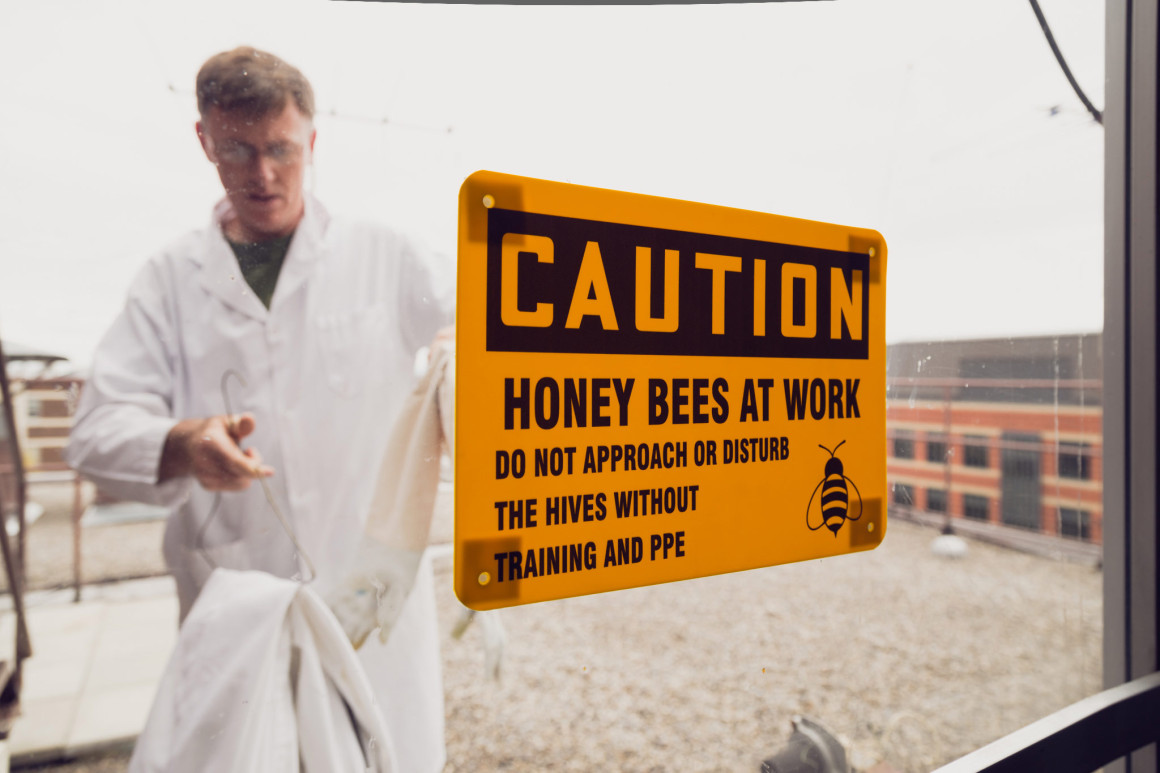
SAIT campus abuzz with rooftop beehives
By Gillian Taylor, October 2 2014 —
SAIT Polytechnic started a sweet project this June. For the last four years, Chef Instructor Andrew Hewson wanted to bring bees to campus to act as an outdoor classroom for the culinary arts program.
After SAIT’s Culinary and Urban Agriculture research group and Applied Research and Innovation Services (ARIS) partnered with the Calgary and District Beekeeping Association, Sait finally had the resources to bring bees to campus.
Chef Hewson sees the hives as a way to educate students about the issues surrounding bees, including natural threats and colony collapse disorder.
“[It’s] a great opportunity for students to really understand what’s going on with bees and our food system, and how critical they are to what we do every day as chefs in the kitchen,” says Hewson.
Bees are busy, as the saying goes, and Hewson and the research team — including Aja Horsley, an ARIS researcher working on the project — need to keep a close eye on them. They monitor the health of the hives every few weeks and
ensure the queen is healthy.
This summer alone, SAIT researchers and beekeepers collected 300 pounds of honey.
The collection is done using a four-frame extractor, which Hewson says is a bit like a “giant salad spinner.”
“We scrape the cone to break it up, and then stand the frames in this big metal drum and put a lid on it. It spins around and the centrifugal force spits all the honey out of the cone,” says Hewson. “It’s not very high tech, but it’s very messy.”
A small portion of the honey is used in SAIT’s teaching restaurant, the Highwood, as an ingredient in cocktails, desserts and main courses. The remainder is packaged and sold at the market at Sait’s downtown campus.
Once all of the honey is out of the cones, a substantial amount of wax is left-over.
Horsley says they’re developing a steam beeswax extractor at SAIT to make the process of melting and extracting the wax easier.
During the winter, it’s important that the bees are comfortable. Horsley, Hewson and the research team finished collecting this season’s honey and are preparing the hives for the colder months. Currently, they’re feeding the bees sugar syrup so they’ll have extra food for the winter. They’ll bring the hives together and cover them with insulation wrap on the sides and the top. Horsley says the bees will then “conglomerate together to conserve heat, and vibrate their wings, and that creates heat for them.”
In the meantime, stop by Sait to learn more about bees and grab a jar of the locally-made honey.
